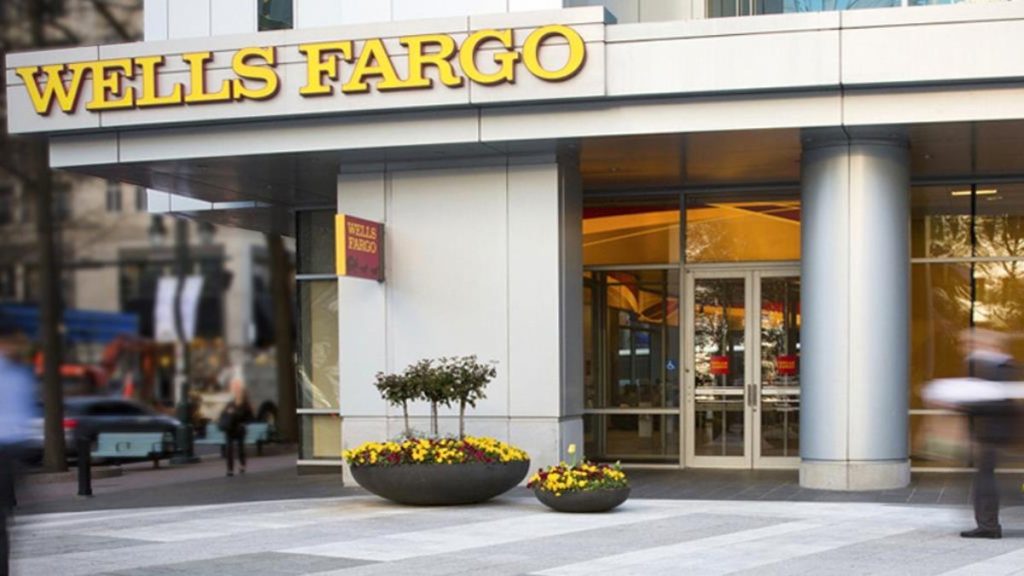One of the largest national banks, Wells Fargo offers a robust roster of banking products and services, including thousands of physical branches throughout the U.S.
Its checking and savings options, however, leave something to be desired, since these accounts come with monthly fees and low yields. Although you can have monthly fees waived by jumping through some hoops, the fact that some jumping is required means not everyone will qualify.
If you love in-person banking, Wells Fargo could be for you. Otherwise, online banks offer more competitive checking and savings accounts.
Account details and annual percentage yields (APYs) are accurate as of September 13, 2023.
Wells Fargo Bank basics
- Checking accounts: Clear Access Banking℠, Prime Checking, Everyday Checking, Premier Checking.
- Savings accounts: Way2Save® Savings, Platinum Savings.
- Money market accounts: None.
- Certificates of deposit (CDs): Five traditional CDs with terms from three months to one year and a minimum deposit of $2,500 to $5,000.
- Other accounts: Credit cards, home loans, personal loans, auto loans, IRA accounts, brokerage accounts, small business and corporate accounts.
- Bank branches or online only: Wells Fargo has more than 4,900 branches and 12,000 ATMs across the U.S. It doesn’t have a physical presence in 13 states, including Louisiana, Oklahoma, Missouri, Indiana, Kentucky, Michigan, Ohio, West Virginia, Vermont, Maine, Massachusetts, New Hampshire and Hawaii.
Pros
- Large network of physical branches. In the digital age, when many financial institutions are shrinking their physical footprint, Wells Fargo has more than 4,900 branches.
- Huge range of financial products. This bank could be your one-stop financial shop. Wells Fargo offers many financial products such as savings, loans and retirement investment services.
- Relationship rates available. You can qualify in several ways for Wells Fargo Relationship rates, which typically garners you greater yields on deposit accounts and lower costs on other banking products.
Cons
- Low savings rates. The savings rates here are very low compared to other banks, especially online-only banks.
- Overdraft fees. Wells Fargo still charges a $35 overdraft fee; many other large banks have eliminated the fee or reduced the fee.
- Previous fraudulent practices. In December 2022, the Consumer Financial Protection Bureau (CFPB) ordered Wells Fargo to pay $3.7 billion in fines and penalties for repeatedly mismanaging accounts.
About Wells Fargo Bank
Wells Fargo was founded in 1852 and is the fourth largest bank in the U.S. by assets. It offers banking for individuals, small businesses and corporations.
Focusing on the personal banking accounts, you can choose between four checking accounts, two savings accounts and five CDs. Whichever checking or savings account you choose, you’ll need a $25 opening deposit and, if you want to avoid monthly fees, you’ll need to jump through at least one hoop.
Checking accounts
The Everyday Checking account is the bank’s most popular checking option. It provides the standard things you’d expect, such as bill pay, mobile deposit, Zelle integration, optional overdraft protection, a contactless debit card and even a checkbook.
The downsides include a $10 monthly fee and the fact that there’s nothing super special about the account — you don’t earn cash back or interest. You can get the monthly fee waived if you:
- Maintain a $500 minimum daily balance.
- Have at least $500 in total qualifying direct deposits.
- Are 17 to 24 years old.
- Link to a Wells Fargo Campus ATM card or Campus Debit card.
The Clear Access Banking account is a slightly pared down version of the Everyday Checking account. It doesn’t offer overdraft services or checks and is meant for kids and people who need second-chance banking. You can avoid the $5 monthly fee if you’re 13 to 24 years old or if you link a Wells Fargo Campus ATM card or Campus Debit card.
The Prime Checking account helps you to qualify for fee waivers and better rates on other other Wells Fargo products, and lets you earn a small amount of interest — the current rate is 0.05% APY for balances under $100,000 and 0.10% APY for balances of $100,000 or greater.
While there is a monthly fee of $25, you can skip if you maintain a $20,000 minimum balance across your Wells Fargo deposit and investment accounts.
The Premier Checking account is geared for depositors who maintain higher balances. It offers 24/7 priority customer service, few service fees, and relationship rates — which means discounted fees on services such as investment advising and higher yields on deposits like CDs.
The yield on this account is higher than other Wells Fargo checking options, 0.25% APY on balances under $100,000 and 0.50% APY on balances of $100,000 or greater. The monthly $35 fee can be avoided with a minimum of $250,000 in deposit account and investment balances at the bank.
Savings accounts
The Way2Save Savings offers 0.15% APY on any balance and features automatic savings tools. You can avoid the $5 monthly service fee if you’re 24 years old or younger, if you maintain a $300 balance or if you make a certain amount of automatic transfers from a Wells Fargo checking account.
The Platinum Savings account allows you to access your money through checks and ATM withdrawals and provides a tiered interest rate schedule, starting at 0.25% APY for balances under $100,000 and going up to 2.50% APY for balances of $1 million or more. Note that both yields are considerably lower than what you can find with the best no-fee savings accounts.
You’ll need to keep a $3,500 minimum daily balance in this account to avoid the $12 monthly service fee.
Certificates of deposit (CDs)
Wells Fargo offers five fixed-rate CDs with terms from three months to one year.
The traditional three-month, six-month and one-year options can be opened with a minimum deposit of $2,500, but they have less-than-stellar yields. Both the three- and six-month terms offer 2.50% APY on all balances — whereas the one-year term only offers 1.50% APY on balances under $100,000 and 2.00% APY on balances of $100,000 or greater.
The Special Fixed Rate CDs of seven and 11 months require a minimum deposit of $5,000, but have competitive rates of 4.75% APY and 5.00% APY respectively.
You could increase the rate on a traditional CD by 0.01% APY (or by 0.26% APY on a Special Fixed Rate CD) if you qualify for the Relationship APY, which requires you to link a Wells Fargo checking account to the CD. Though the increase is larger for the seven and 11-month options.
*Special Fixed Rate CD
Other accounts
Wells Fargo offers a plethora of personal banking products, including five types of credit cards and five types of loans: home purchase, home refinance, home improvement, auto and personal loans. The bank doesn’t offer student loans and has temporarily paused its home equity loans due to market conditions.
How Wells Fargo stacks up
Wells Fargo Bank vs. Ally Bank
Wells Fargo and Ally Bank could both meet your banking needs. Both provide checking, savings, loans and investment products. If you’re OK going without branches however, Ally is more competitive overall.
As an online-only bank, Ally doesn’t have any minimum balances or monthly fees and it offers much more competitive interest rates: 0.25% APY on its Spending (checking) Account and 4.25% APY on its Savings Account. And, while you’re bereft of branches, you’re spoiled for ATMs. Ally is part of the Allpoint ATM network, which has 43,000 ATMs (better than Wells Fargo’s 12,000 ATMs).
Wells Fargo Bank vs. Capital One 360
As two of the largest brick-and-mortar banks in the nation, Wells Fargo and Capital One are natural competitors. Capital One has fewer banking products — it doesn’t offer home loans or investing services — but it does have more competitive deposit accounts and a larger ATM network with 70,000 ATM machines.
The Capital One 360 Checking Account and 360 Performance Savings don’t charge monthly fees or require a minimum balance and, respectively, pay 0.10% APY and 4.30% APY. On top of that, its checking account includes early direct deposit and no-fee overdraft coverage.
Wells Fargo Bank vs. Discover Bank
Discover is an online-only bank with more than 60,000 free ATMs in-network. And while it doesn’t have multiple types of checking and savings accounts like Wells Fargo, its rates are competitive and its simplified approach can be appealing.
The Discover Checking Account offers 1% cashback on its debit card (on up to $3,000 in debit purchases each month), while its Online Savings Account rate is 4.30% APY. Neither requires a minimum balance or monthly fees.
Regarding other banking services, Discover offers credit cards and a range of loan options including personal, student and home loans.
Frequently asked questions
Wells Fargo is a well-established bank that offers many services and loans, but tends to pay low yields on savings and deposits.
Yes, Wells Fargo is insured by the Federal Deposit Insurance Corp. (FDIC). That means each depositor is insured for up to $250,000 in each account category.
Whether you open an account in person or online, you’ll need to provide personal information such as your full name, date of birth, Social Security Number and residential address. You may also need to show an identification document, such as a driver’s license, and have the opening deposit ready to go. Be sure you have enough to at least cover the minimum opening deposit requirement, such as $25 for a savings or basic checking account.
Wells Fargo is insured by the FDIC, so your deposits under $250,000 are safe. However, the bank has had several financial scandals that involved financial harm to customers. The Consumer Financial Protection Bureau (CFPB) ordered Wells Fargo to pay $3.7 billion in 2022 for repeated infractions.
Read the full article here














